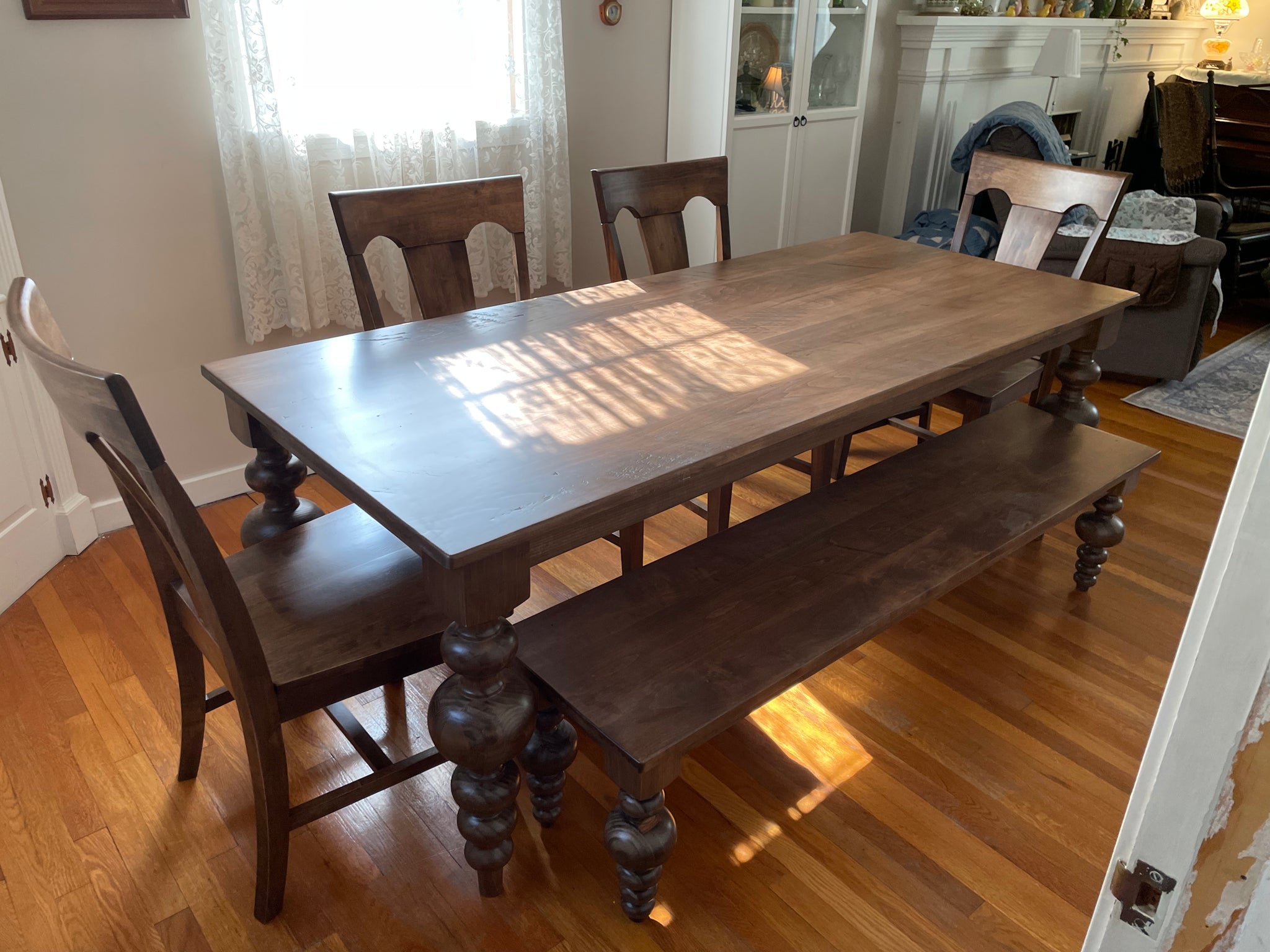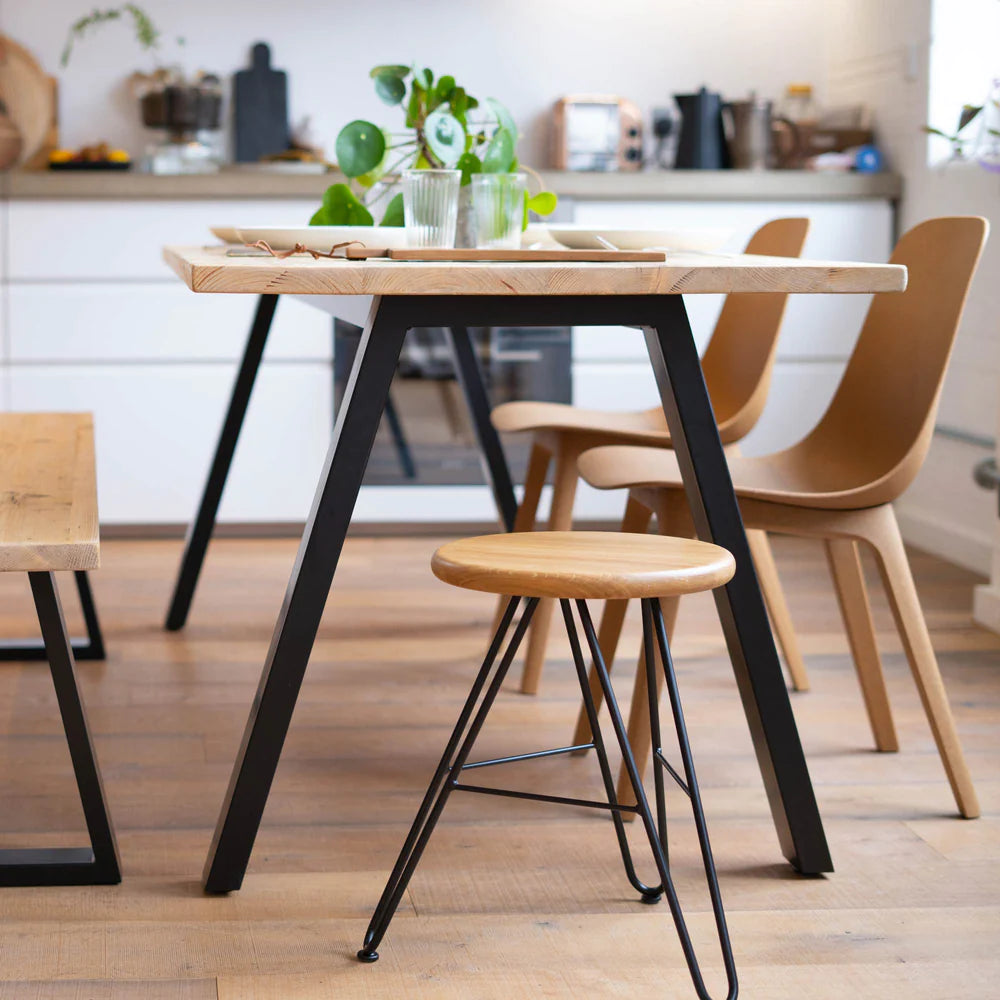Unique Dining Room Table Legs That Will Elevate Your Dining Area
Unique Dining Room Table Legs That Will Elevate Your Dining Area
Blog Article
From Traditional to Modern: Find the Suitable Dining-room Table Legs for Your Style
The selection of dining-room table legs plays an essential duty in defining the general personality of your room, connecting the void in between traditional craftsmanship and modern-day visual appeals. While classic designs such as cabriole and transformed legs evoke a feeling of classic refinement, modern styles like barrette and geometric alternatives present a possibility for striking aesthetic rate of interest. Examining the appropriate balance between these styles requires a nuanced understanding of your existing design and individual taste. As you consider these components, the concern stays: exactly how can you perfectly integrate these varied leg styles to create a harmonious eating experience?
Recognizing Table Leg Styles
The variety of dining-room table leg designs can substantially affect both the appearances and functionality of the area. Each leg style contributes one-of-a-kind aesthetic elements and practical attributes, accommodating varied layout preferences and use demands. Comprehending these designs is critical for picking the ideal dining table that straightens with your total indoor layout vision.
For example, conical legs supply a tidy, traditional look that can boost a space's beauty, while stand bases offer stability and make best use of legroom, making them perfect for smaller areas. Barrette legs, a trademark of mid-century modern layout, introduce a commercial style, permitting a ventilated, open feel. Likewise, trestle legs evoke rustic beauty, offering robust support and a sense of eternity.
Wood legs can bring heat and texture, whereas metal alternatives frequently communicate a streamlined, modern vibe. Eventually, recognizing table leg designs is essential for producing a natural eating location that mirrors personal design while ensuring practicality and convenience.
Standard Table Leg Options
When choosing dining space table legs, typical choices usually personify timeless style and craftsmanship. These designs reflect an abundant heritage and a commitment to top quality, making them perfect for those that appreciate traditional aesthetic appeals.
Among one of the most renowned typical leg styles is the cabriole leg, defined by its stylish curved shape. This layout usually includes decorative carvings and is most generally found in Queen Anne and Chippendale furniture. Another prominent choice is the transformed leg, which flaunts a collection of smooth, rounded forms that give a timeless look while preserving security.
In addition, the straight leg, while simple, provides a unadorned and strong framework that can blend seamlessly with a range of tabletop designs. For those drawn to ornate outlining, claw-and-ball feet legs stimulate a sense of majesty and can function as a spectacular centerpiece in any kind of dining area.
Last but not least, stand bases, although not strictly legs, give a different standard choice that enables ample legroom and can be beautifully sculpted. Each of these standard leg styles adds to the overall atmosphere of an eating room, weding feature with aesthetic charm.

Modern Table Leg Designs
Modern table leg styles supply a diverse variety of designs that stress clean lines and innovative materials. These styles typically prioritize capability while working as striking focal factors within an eating space. Minimal looks prevail, with legs crafted from products such as metal, glass, and crafted timber, which add to a contemporary and airy feeling.
One popular style is the barrette leg, characterized by its slender, tapered framework that provides security without overwhelming the tabletop (dining room table legs). This style is frequently discovered in mid-century contemporary furnishings and can easily match numerous eating table forms. One more pattern is making use of geometric forms, where legs may handle unbalanced or angular forms, including visual rate of interest and address a touch of creativity

Blending Styles for Distinct Rooms
Usually, home owners seek to produce distinct dining spaces that show their personal style by mixing numerous style components. This method enables the consolidation of varied appearances, causing an unified yet unique atmosphere. As an example, combining a rustic wood table with sleek, contemporary metal legs can create an eye-catching comparison that elevates the room's overall allure.
In addition, incorporating vintage table legs with modern table tops can evoke a feeling of history while keeping a modern sensibility. Such combinations not just display individual preference but additionally motivate imagination, enabling property owners to curate a room that really feels both personal and welcoming.
Color plays a critical role in this mixing process; choosing table legs that enhance or comparison with the existing shade system can boost Get More Information visual passion. As an example, whitewashed legs can soften the boldness of a dark table surface area, producing a well balanced visual.
Tips for Choosing the Right Legs
Selecting the right table legs is necessary for accomplishing both performance and aesthetic appeal in your dining room. Begin by considering the total style of your room. Standard settings take advantage of legs that include complex makings or transformed layouts, while contemporary spaces might ask for smooth, minimalist styles.
Following, evaluate the height and security of the legs. dining room table legs. Typical dining tables range between 28 to 30 inches in height, so make sure the legs match this dimension for convenience. In addition, robust materials, such as wood or metal, can enhance security and durability
Review the leg form also-- alternatives include directly, tapered, or stand styles. Straight legs offer a timeless look, while tapered legs Read More Here can add a touch of beauty. Pedestal bases provide ample legroom and are ideal for smaller rooms.
Conclusion
In summary, selecting the ideal eating space table legs needs careful consideration of both modern and typical designs. By integrating leg style, height, and material with the total decoration, a cohesive and welcoming atmosphere can be attained.
The variety of eating area table leg designs can dramatically affect both the aesthetics and performance of the area. Eventually, recognizing table leg styles is crucial for producing a cohesive eating area that reflects personal design while guaranteeing practicality and convenience.One of the most legendary conventional leg styles is the cabriole leg, defined by its graceful rounded form. Straight legs use a traditional appearance, while tapered legs can add a touch of elegance.In summary, picking the optimal dining room table legs needs mindful consideration of both conventional and modern styles.
Report this page